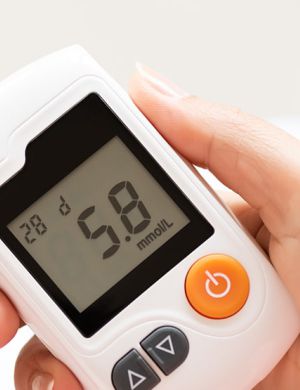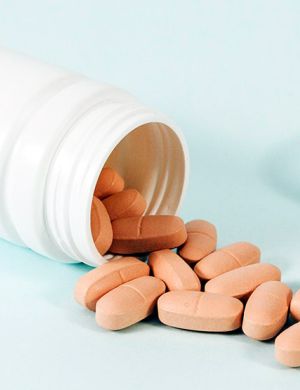
Expanded OTC Approvals and Market Projections (2000-2040)
The Over-the-Counter (OTC) drug market has undergone significant evolution since the early 2000s. With increasing demand for self-medication, advancements in healthcare technology, and greater consumer awareness, the global OTC market has experienced steady growth. This blog explores the historical expansion of the OTC market, the factors driving its growth, and provides a comprehensive forecast of the market’s trajectory through 2040. Additionally, it highlights precautionary measures taken by different countries to mitigate potential risks associated with expanded OTC approvals.
The Expansion of the OTC Market (2000-2020)
From 2000 to 2020, the global OTC market saw remarkable growth, driven by several key factors:
2000-2005: Early Growth and Consumer Shift
- Market Size: ~$50 billion in 2000 to ~$60 billion by 2005.
- Growth Drivers: This period saw an early shift in consumer behavior, with an increasing willingness to self-medicate. Basic products like pain relievers, cough, and cold medications were the primary OTC drugs available.
- Key Market Trends: Increased access to OTC medications as regulatory bodies began loosening restrictions on certain drugs, such as antihistamines and antacids.
2005-2010: Regulatory Changes and Expanding Categories
- Market Size: ~$60 billion to ~$80 billion.
- Growth Drivers:Regulatory changes allowed more medications to be sold OTC. Drugs like emergency contraception (Plan B) and allergy medications became more widely available without a prescription.
- Key Market Trends:The emergence of OTC products for dermatological care, digestive health, and chronic pain began to diversify the OTC landscape.
2010-2015: Diversification and Self-Care Movement
- Market Size: ~$80 billion to ~$100 billion.
- Growth Drivers: With growing consumer awareness around self-care, products for skin health, wellness supplements, and chronic disease management surged in popularity.
- Key Market Trends: Key Market Trends: Increased demand for vitamins, topical treatments, and herbal products that could be used without professional guidance.
2015-2020: COVID-19 Pandemic Surge
- Market Size: ~$100 billion to ~$150 billion.
- Growth Drivers: The COVID-19 pandemic had a profound impact on OTC sales, especially for products like immune boosters, sanitizers, and over-the-counter treatments for common symptoms such as fever and cough.
- Key Market Trends: Online pharmacy services became more prominent, and demand for OTC health products surged as consumers turned to self-medication during lockdowns.
Overview of OTC Drug Approvals
OTC drugs are generally approved by the U.S. Food and Drug Administration (FDA) through two primary routes:
- New Drug Application (NDA) Process: This applies when a manufacturer seeks approval to make a prescription drug available over the counter. The FDA reviews safety, efficacy, and labeling for consumer use.
- Drug Monograph System: The FDA also maintains a “monograph” system, which allows drugs to be marketed OTC if they meet specific conditions. This is a more streamlined process, and many older drugs fall under this system. Drugs approved this way are generally considered safe and effective for use in the general population.
The Expanded OTC Landscape
In recent years, the FDA has been working to expand OTC options, particularly in categories like pain management, allergy treatments, and even certain forms of contraception. Some examples of expanded OTC approvals include:
- Plan B (Emergency Contraceptive Pills): Initially prescription-only, Plan B was approved for OTC sale to people 17 and older in 2006, with broader access granted in 2013.
- Decongestants and Antihistamines: Drugs like Claritin (loratadine) and Zyrtec (cetirizine) were initially prescription drugs and later became available over the counter, giving consumers more autonomy in managing allergies.
- Statins for Cholesterol: In some countries, there have been calls for statins (medications that lower cholesterol) to be available OTC, though this is still under review in the U.S.
- Nasal Sprays for Pain and Inflammation: Certain nasal sprays like Flonase were initially prescription-only and are now available OTC for allergy and inflammation relief.
Benefits of Expanded OTC Approvals
- Improved Access: Consumers no longer need a doctor’s prescription for common ailments, reducing the burden on healthcare systems.
- Cost Reduction: OTC drugs are often less expensive than prescription alternatives, especially when insurance doesn’t cover certain medications.
- Self-care Empowerment: Expanded access gives consumers more control over their health, enabling them to choose treatments that are appropriate for them without waiting for a doctor’s appointment.
- Convenience: Many people can manage common health issues quickly and efficiently by obtaining OTC medications at their local pharmacy.
Challenges and Concerns
- Safety and Misuse: Some medications, while safe for many people, may not be suitable for everyone. Without professional guidance, consumers may misuse or overuse medications, leading to adverse effects.
- Limited Patient Education: OTC drugs rely on consumer understanding of labeling and dosage, which may not be as comprehensive as the advice provided by a healthcare professional.
- Potential Delays in Diagnosis: With OTC access, there’s a risk that consumers might self-medicate without seeking a proper diagnosis, leading to undiagnosed conditions or worsening health problems.
- Regulatory Hurdles: Not all drugs are suitable for OTC approval. Some medications are too potent, have complex side effects, or require medical monitoring that makes them unsuitable for over-the-counter use.
Statistics on OTC Approval and Usage
- FDA Data: The FDA has approved over 700 OTC monograph drugs in the U.S. These include a wide variety of over-the-counter medications that range from pain relief to cold and flu treatments.
- Market Trends: According to the American Association of Health-System Pharmacists, OTC sales in the U.S. reached $34 billion in 2022, highlighting the significant consumer demand for OTC products.
- Public Health Impact: A study published in the Journal of the American Medical Association (JAMA) noted that for certain chronic conditions, up to 30% of patients have the potential to manage their condition with OTC options when they are made available, particularly in the case of treatments for minor ailments like heartburn, allergies, and headaches.
- Global Market Growth: The global OTC drug market is projected to grow by 6.5% annually from 2023 to 2030, reflecting the increasing adoption of OTC medications worldwide.
Future of OTC Approvals
Looking forward, we may see an increased push for OTC availability of other prescription medications, especially in light of healthcare pressures such as rising costs and access issues. Some areas that are being considered for expanded OTC availability include:
- Hormonal Contraceptives: There is increasing interest in allowing hormonal birth control pills to be sold over the counter, which would make them more accessible and remove barriers to access.
- Statins: As mentioned earlier, cholesterol-lowering drugs are being considered for OTC approval in some countries, given their long-term safety profiles and importance in preventing cardiovascular disease.
- Opioid Alternatives: With the opioid crisis ongoing, the FDA has been exploring non-prescription alternatives for pain relief, like CBD-based treatments or non-addictive pain relievers.
- Chronic Disease Management: There may be an expansion of OTC medications that help manage conditions like hypertension and diabetes, which would empower consumers to take control of their health more effectively.
Expanded Over-the-Counter (OTC) Approvals Globally
The concept of expanding Over-the-Counter (OTC) drug approvals is a global trend that has evolved differently in various countries, based on their healthcare systems, regulatory frameworks, and cultural attitudes towards self-medication. Below is an in-depth look at how different countries, including the United States, approach OTC drug approvals and their regulations.
1. United States
In the U.S., the FDA (Food and Drug Administration) is the primary regulatory body responsible for overseeing OTC drug approvals.
Key Points:
- OTC Drug Approval Process: As mentioned earlier, OTC drugs in the U.S. are either approved via a New Drug Application (NDA) or through the OTC Drug Monograph system. The latter allows drugs to be marketed without the need for individual approval, provided they meet specific criteria (e.g., dosage, safety, and efficacy).
- Recent Expansions: The U.S. has expanded OTC access for several drug categories in recent years, such as emergency contraception, statins, and allergy medications.
- Statistics:
- The OTC drug market in the U.S. reached $34 billion in 2022 and is projected to continue growing.
- OTC sales accounted for approximately 60% of total consumer spending on pharmaceuticals.
Challenges:
Despite increased availability, the FDA is careful not to approve certain drugs without considering their potential misuse or self-diagnosis risks (e.g., statins for cholesterol management).
2. United Kingdom (UK)
The UK has a more restrictive approach compared to the U.S., but it is gradually shifting towards expanded access.
Key Points:
- Regulatory Body: In the UK, the Medicines and Healthcare products Regulatory Agency (MHRA) is responsible for OTC drug approvals.
- OTC Drug Approvals: While the UK has a large number of OTC medications available (e.g., pain relievers like paracetamol and ibuprofen), there is a more cautious approach to the release of prescription drugs to OTC status.
- Recent Expansions:
- Emergency contraception (Plan B): In 2001, levonorgestrel became available over-the-counter for women aged 16 and over, and in 2015, it was expanded to be available for all women.
- Statins: The UK has also seen discussions around making low-dose statins available OTC, though this remains a topic of debate.
Statistics:
- The global OTC market in the UK reached £6.5 billion in 2022, with prescription-to-OTC switches growing rapidly.
- The National Health Service (NHS) reports that 70% of adults in the UK self-medicate at least once a year using OTC products.
Challenges:
- The primary concern in the UK is patient safety and the risk of improper self-diagnosis. Therefore, MHRA ensures that clear labeling and guidance are provided to minimize misuse.
3. Canada
Canada has a system that closely mirrors the U.S. in terms of regulatory approval for OTC drugs, with a significant focus on consumer access and safety.
Key Points:
- Regulatory Body: Health Canada is the regulatory authority responsible for overseeing OTC drug approval.
- OTC Drug Market: The Canadian market has seen increasing access to a wide range of OTC medications, including those for pain relief, allergy treatments, and cold medications.
- Recent Expansions:
- Emergency contraception was made available OTC in 2005 for women aged 17 and older, with full access granted in subsequent years.
- Antihistamines and non-prescription antihistamine nasal sprays (like Flonase) have been approved for broader consumer use.
Statistics:
- Canada’s OTC market was valued at approximately CAD 7.5 billion in 2021 and is projected to grow at a rate of 6.8% annually.
- Health Canada reports a significant rise in self-medication, with 48% of Canadians using at least one OTC drug monthly.
Challenges:
- The need for ongoing public education and awareness campaigns to prevent misuse of OTC drugs is a key focus.
4. Australia
Australia has one of the more liberalized OTC approval systems, with a distinct schedule system that categorizes drugs based on their accessibility.
Key Points:
- Regulatory Body: The Therapeutic Goods Administration (TGA) is responsible for regulating medicines in Australia.
- OTC Drug Approval Process: Similar to other countries, Australia’s OTC medications are subject to rigorous testing for safety, efficacy, and appropriateness for self-medication.
- Recent Expansions: The availability of low-dose statins for cholesterol management has been under consideration, with ongoing discussions about more medications being moved to OTC status in the near future.
- Codeine: In 2018, Australia switched codeine from an OTC medication to a prescription-only drug due to concerns about misuse and addiction.
- Contraception: While oral contraceptives are still prescription-only, there have been strong advocacy movements for making them OTC.
Statistics:
- The Australian OTC market reached an estimated value of AUD 5 billion in 2021 and continues to show growth, particularly in pain relief and cough and cold treatments.
- A study found that 72% of Australians report using at least one OTC medication per year.
Challenges:
- Codeine abuse has been a significant challenge, leading to stricter regulations. There is concern about potential misuse of other OTC products as well.
Precautionary Measures to Address Risks
With the increased availability of OTC drugs comes the challenge of mitigating potential misuse, side effects, and other health risks. Various countries have implemented precautionary measures to ensure that the benefits of expanded OTC access do not outweigh the risks.
United States
- Regulatory Oversight: The FDA closely monitors the approval process for OTC drugs and ensures thorough labeling and safety instructions are in place.
- Pharmacist Involvement: For higher-risk OTC drugs, like pseudoephedrine, a pharmacist may be required to provide guidance before the consumer can purchase them.
- Post-Market Surveillance: The FDA conducts post-market surveillance to monitor adverse effects and adjust product guidelines if necessary.
United Kingdom
- Pharmacy Consultation: Certain OTC medications, such as emergency contraception, require a pharmacist consultation before purchase.
- Clear Labeling: Extensive labeling regulations ensure that consumers are aware of side effects, proper dosages, and when to seek professional medical help.
Canada
- Strict Drug Classifications: High-risk drugs are still regulated tightly, and the pharmacy-only or behind-the-counter sale ensures that consumers receive guidance before purchasing.
- Public Health Campaigns: Health Canada runs continuous educational campaigns on the risks of OTC misuse and how to safely self-medicate.
Australia
- Schedule System: Australia uses a medication scheduling system to categorize drugs based on their risk. Higher-risk drugs like codeine are prescription-only, while lower-risk options are available OTC.
- Pharmacist Oversight: Certain OTC drugs, such as strong antihistamines, can only be dispensed with pharmacist advice.
OTC Market Forecast (2025-2040)
The global OTC market is expected to grow substantially in the coming decades, fueled by technological advancements, an aging population, and increasing demand for self-care and preventative health solutions. Below is the projected market growth:
| Year | Projected Market Size (Billion USD) | CAGR (Compound Annual Growth Rate) | Key Drivers |
| 2025 | ~$180 Billion | 4.0% | Digital Health solutions, mental health products, and increased access to personal care. |
| 2030 | ~$250 Billion | 6.1% | Preventative healthcare, aging populations, and the rise of chronic disease management. |
| 2035 | ~$350 Billion | 7.1% | AI-powered health solutions, smart devices, and growing access to complex OTC drugs. |
| 2040 | ~$500 Billion | 6.5% | Personalized OTC products, AI diagnostics, and the continuous rise of self-care trends. |
Key Growth Drivers (2025-2040)
- Technological Advancements: The integration of smart health devices, AI-powered diagnostics, and telemedicine will significantly influence the OTC market.
- Aging Populations: As populations in developed nations age, there will be an increased demand for OTC products aimed at chronic disease management and overall wellness.
- Self-Care and Preventative Health: More consumers will proactively use OTC products for preventive care, leading to an increase in the market size.
- Regulatory Changes: As more drugs transition from prescription to OTC, new markets will open up, including products for chronic conditions and mental health.
- Consumer Education: Increased education around safe OTC use will mitigate risks related to misuse and self-diagnosis.
Conclusion
The global OTC market has shown robust growth from 2000 to 2020, driven by regulatory changes, consumer demand for self-care, and technological innovations. The market is projected to continue growing through 2040, with a shift towards personalized medicine, AI-powered tools, and digital health solutions. However, as access to OTC drugs expands, it is crucial for regulatory bodies and healthcare providers to ensure appropriate oversight to prevent misuse and safeguard public health. Countries around the world have implemented precautionary measures, such as pharmacist consultations, clear labeling, and public education campaigns, to ensure that consumers can safely navigate the OTC drug market. The future of OTC drug market looks promising, with an increasing role for preventative care, chronic disease management, and self-care technologies. By embracing technological advancements and ensuring consumer safety, the global OTC market will continue to meet the evolving needs of healthcare consumers worldwide. For more insights on regulatory compliance in consumer health, visit Vistaar.ai.
Don’t miss out! Click here to stay in touch.
Categories
- Biopharma (58)
- Consumer Health (21)
- Cosmetics (11)
- Diagnostics (5)
- Digital Health (8)
- Food (2)
- Medical Device (112)
- OTC (5)
- Regulatory Intelligence (13)
- Standards (41)
Recent Blogs
Get the latest updates from Vistaar

CONNECT WITH US

Let's talk about how Vistaar can help you




